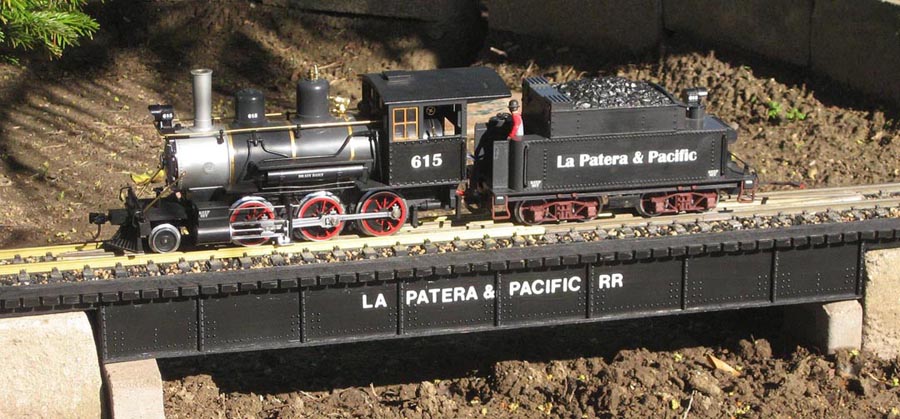
 |
| I am pleased with how nicely this deck girder bridge turned out. I followed Richard Smith's April 2001 Garden Railroading magazine article for his Port Orchard deck girder bridge. Although not seen very well in this picture, I have placed guard rails between the main tracks. The ballast is a mixture of basalt and metamorphic rock crusher fines. The rails and ballast rest on a plank deck. |
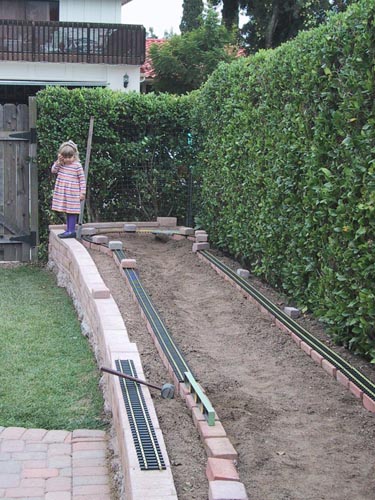 |
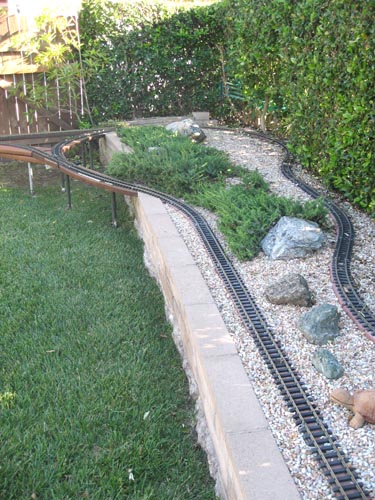 |
| Track on common brick. Gravel will cover the dirt to the height of the brick, but the track will lay completely on the brick. December 2002. | Gravel has been emplaced, the track is on brick, and the configuration of the track has been easily modified by moving the bricks. Note the increased radius of curvature at the end and the addition of a wye. May 2010. |
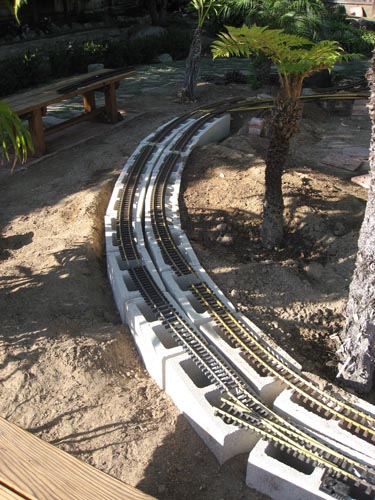 |
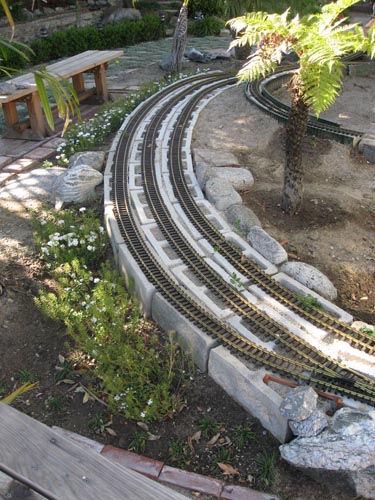 |
| Track on concrete block. Dirt will fill the holes and be banked up against the blocks so that the block will not show. December 2009. | Some rocks and plants begin to cover the blocks, the holes are fill with sand, and a passing siding has been added in April 2010. |
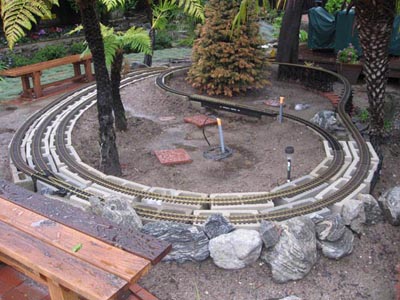 |
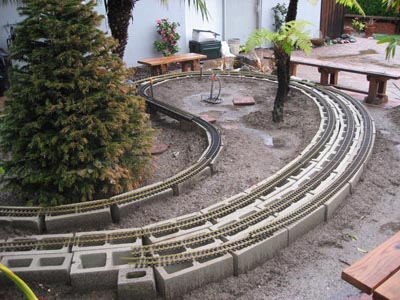 |
| A wall of boulders covers the concrete blocks. | You can build nice curves and loops with concrete blocks. |
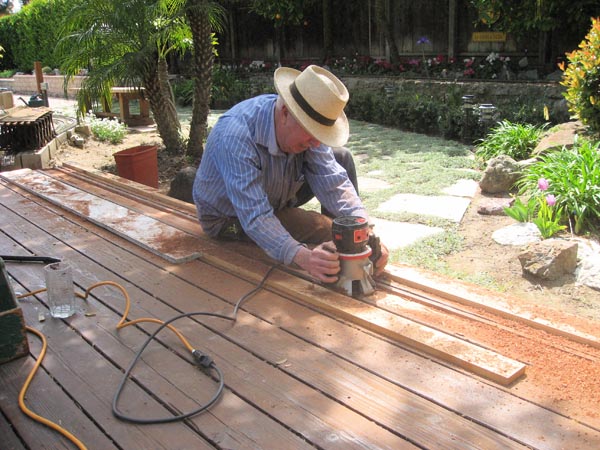 |
| To get from the old layout (in the shade in the background) to the new extension shown in the images above (and out of sight at the left edge of this image), it was necessary to cross a redwood deck, so we routed two planks for two tracks to a depth that would leave the top of code 332 rails and their ties flush with the surface of the deck. April 2010. |
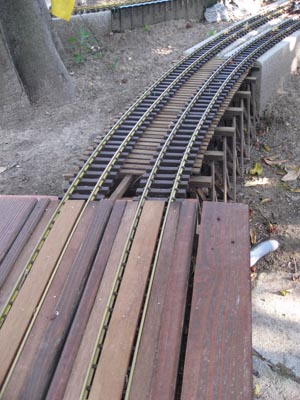 |
| Tracks come off a double-track trestle onto the deck where they resemble trolley car tracks. The tops of the rails are flush with the surface of the deck as are the inserts on either sides of the rails, so that one can walk on the tracks without stubbing a toe. |